March 8th is International Women’s Day! This year, the theme of International Women’s Day is Balance for Better. As students and teachers, we can look for ways to improve gender balance in our classrooms. For today and every day, here are resources that can help you start discussions about gender equality.
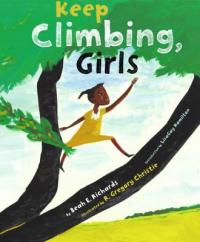 Keep Climbing, Girls by Beah E. Richards; Illustrated by R. Gregory Christie
Keep Climbing, Girls by Beah E. Richards; Illustrated by R. Gregory Christie
When Miss Nettie sees a girl climbing a tree, she is certain she knows how to get her down. Miss Nettie warns the girl she’ll hurt herself, and that she’ll have scars like a tomboy, and that people will shame her – but the girl keeps climbing higher and higher! This poem reminds young girls to be confident in themselves and their goals, and that the best place to be seen is heard is from the tallest treetops. Keep Climbing, Girls can be used to help young students understand that girls can do anything boys can do. Older elementary students might be interested to know that Richards’ poem was originally published in 1951, and can compare women’s rights between now and then.
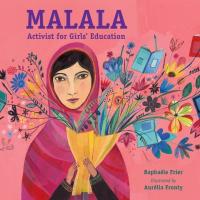 Malala: Activist for Girls’ Education by Raphaële Frier; illustrated by Aurélia Fronty
Malala: Activist for Girls’ Education by Raphaële Frier; illustrated by Aurélia Fronty
This children’s book tells the story of Malala Yousafzai, an activist for female education and the youngest person to win a Nobel Peace Price. At fifteen, Malala became a target for the Taliban when she publicly called for the right for girls to be educated in Pakistan. After being shot by the Taliban on her way home from school, Malala made a full recovery and started the Malala Fund, a foundation dedicated to improving the rights of girls experiencing poverty, child marriage, and war. The first half of this book tells the story of Malala’s life, accompanied by illustrations. The second half of the book serves as an introduction to the global context surrounding Malala’s story, and includes short write-ups on Pakistan, the status of women’s education worldwide, and biographies of some of Malala’s inspirational heroes. This portion of the book is accompanied by maps, photographs of Malala, and excerpts of her most important quotes. Children from third grade onward will appreciate the balance of story and information.
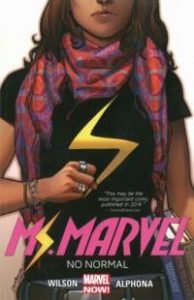 Ms. Marvel: No Normal by G. Willow Wilson; artist Adrian Alphona
Ms. Marvel: No Normal by G. Willow Wilson; artist Adrian Alphona
Kamala Kahn wants to fit in – to have lots of friends, to be allowed to go to parties, and to look like the blonde girls in her Jersey City hometown. However, she struggles to balance her own identity as a Muslim teenager (including a love for superheroes!) with the expectations of her parents. But when her parents forbid her to go to a party with boys, Kamala sneaks out of the house, and her life changes forever – suddenly, she has superpowers, and looks just like Ms. Marvel. But as she learns to manage her newfound powers, Kamala must decide how she wants the world to see her – and how she wants to see herself. Fast-paced and relatable to teens, this graphic novel is a continuation of the Ms. Marvel Universe that deserves a home in any middle or high school literature classroom.
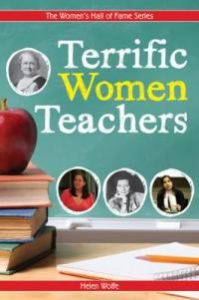 Terrific Women Teachers by Helen Wolfe
Terrific Women Teachers by Helen Wolfe
If you have students who are interested in becoming teachers – of if you’re in need of a little teacher inspiration yourself – this compilation of women teachers and their legacies is the perfect read! Featuring the biographies of ten women teachers, each chapter describes the challenges that women educators have faced in their careers, and how they overcame those challenges to improve the lives of their students. Entries include biographies on Helen Keller and her teacher Annie Sullivan Macy, Maria Montessori, Malalai Joya, Christa McAuliffe, and Erin Gruwell (author of The Freedom Writer’s Diary). Engaging through its casual tone and snippets on important topics in education, this book is also a good bridge to introducing non-fiction chapter books to elementary school readers.
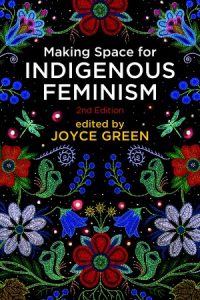 Making Space for Indigenous Feminism (2nd edition) edited by Joyce Green
Making Space for Indigenous Feminism (2nd edition) edited by Joyce Green
This book is a follow-up to the original version published in 2007, which explored the difficulties that Indigenous women navigate in finding space in both traditional feminism and Indigenous issues. Joyce describes Indigenous feminism as drawing on elements of Indigenous cultures (such as connections to land, territory, and relationships) and histories of colonization and oppression (5). This book showcases many of the voices being added to Indigenous feminist scholarship in the last ten years, and covers issues such gendered violence in Indigenous communities, illness and poverty experienced by Métis elders, Indigenous law, and decolonization.
To check out these and many more materials about feminism, women leaders, and girl power, visit the Lobby Display in the OISE Building, adjacent to the OISE Library entrance. Ask a librarian for help removing books from the display case.
